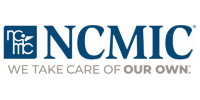WASHINGTON -- Medication errors are among the most common medical errors, harming at least 1.5 million people every year, says a new report from the Institute of Medicine of the National Academies. The extra medical costs of treating drug-related injuries occurring in hospitals alone conservatively amount to $3.5 billion a year, and this estimate does not take into account lost wages and productivity or additional health care costs, the report says. The committee that wrote the report recommended a series of actions for patients, health care organizations, government agencies, and pharmaceutical companies. The recommendations include steps to increase communication and improve interactions between health care professionals and patients, as well as steps patients should take to protect themselves. The report also recommends the creation of new, consumer-friendly information resources through which patients can obtain objective, easy-to-understand drug information. In addition, it calls for all prescriptions to be written electronically by 2010 and suggests ways to improve the naming, labeling, and packaging of drugs to reduce confusion and prevent errors. "The frequency of medication errors and preventable adverse drug events is cause for serious concern," said committee co-chair Linda R. Cronenwett, dean and professor, School of Nursing, University of North Carolina, Chapel Hill. "We need a comprehensive approach to reducing these errors that involves not just health care organizations and federal agencies, but the industry and consumers as well," she said. Co-chair J. Lyle Bootman, dean and professor, College of Pharmacy, University of Arizona, Tucson, added, "Our recommendations boil down to ensuring that consumers are fully informed about how to take medications safely and achieve the desired results, and that health care providers have the tools and data necessary to prescribe, dispense, and administer drugs as safely as possible and to monitor for problems. The ultimate goal is to achieve the best care and outcomes for patients each time they take a medication." Estimates of Rates and Costs Medication errors encompass all mistakes involving prescription drugs, over-the-counter products, vitamins, minerals, or herbal supplements. Errors are common at every stage, from prescription and administration of a drug to monitoring of the patient's response, the committee found. It estimated that on average, there is at least one medication error per hospital patient per day, although error rates vary widely across facilities. Not all errors lead to injury or death, but the number of preventable injuries that do occur -- the committee estimated at least 1.5 million each year -- is sobering, the report says. Studies indicate that 400,000 preventable drug-related injuries occur each year in hospitals. Another 800,000 occur in long-term care settings, and roughly 530,000 occur just among Medicare recipients in outpatient clinics. The committee noted that these are likely underestimates. There is insufficient data to determine accurately all the costs associated with medication errors. The conservative estimate of 400,000 preventable drug-related injuries in hospitals will result in at least $3.5 billion in extra medical costs this year, the committee calculated. A study of outpatient clinics found that medication-related injuries there resulted in roughly $887 million in extra medical costs in 2000 -- and the study looked only at injuries experienced by Medicare recipients, a subset of clinic visitors. None of these figures take into account lost wages and productivity or other costs. Improving the Patient-Provider Partnership Establishing and maintaining strong partnerships between health care providers and patients is crucial to reducing medication errors, the report says. The committee called on consumers to be active partners in their medication care and on physicians, nurses, and pharmacists to know and act on patients' medical care rights. The report recommends specific steps that physicians, nurses, pharmacists, and other health professionals should take to ensure that their patients are fully informed about their drug regimens and to minimize opportunities for mistakes to occur. Health care organizations also should make it a standard procedure to inform patients about clinically significant medication errors made in their care, whether the mistakes lead to harm or not. Currently, health care providers typically do not inform the patient or the patient's guardians about errors unless injury or death results. The report also provides consumers with a list of specific questions to ask health care providers, such as how to take their medications properly and what to do if side effects occur. Also included are actions consumers should take, such as requesting that their providers give them a printed record of the drugs they have been prescribed. Patients should maintain an up-to-date list of all medications they use -- including over-the-counter products and dietary supplements -- and share it with all their health care providers. This list should also note the reasons they are taking each product and any drug and food allergies they have. New and Improved Drug Information Resources Although consumers can find helpful drug information online or in the printed materials provided by pharmacies, this information often is too difficult for many people to understand, too scattered, or otherwise not consumer-friendly. The quality of the drug information leaflets that accompany prescriptions varies widely, and these printouts are typically written at a college reading level. The U.S. Food and Drug Administration (FDA) should work with other appropriate groups to standardize the text and design of medication leaflets to ensure that they are comprehensible and useful to all consumers. The committee called on the National Library of Medicine (NLM) to be the chief agency responsible for online health resources for consumers; it should create a Web site to serve as a centralized source of comprehensive, objective, and easy-to-understand information about drugs for consumers. In addition, NLM should work with other groups to evaluate online health information and designate Web sites that provide reliable information. The committee also recommended that NLM, FDA, and the Centers for Medicare and Medicaid Services evaluate ways to build and fund a national network of telephone helplines to assist people who may not be able to access or understand printed medication information because of illiteracy, language barriers, or other obstacles. This telephone network should also enable consumers to report medication-related mistakes or problems. Electronic Prescribing and Other IT Solutions New computerized systems for prescribing drugs and other applications of information technology show promise for reducing the number of drug-related mistakes, the report says. Studies indicate that paper-based prescribing is associated with high error rates. Electronic prescribing is safer because it eliminates problems with handwriting legibility and, when combined with decision-support tools, automatically alerts prescribers to possible interactions, allergies, and other potential problems, the committee found. While it acknowledged that significant regulatory issues and problems with automated alerts still need to be worked out, the committee said that by 2008 all health care providers should have plans in place to write prescriptions electronically. By 2010 all providers should be using e-prescribing systems and all pharmacies should be able to receive prescriptions electronically. The Agency for Healthcare Research and Quality (AHRQ) should take the lead in fostering improvements in IT systems used in ordering, administering, and monitoring drugs. All health care provider groups should be actively monitoring their progress in improving medication safety, the committee recommended. Monitoring efforts might include computer systems that detect medication-related problems and periodic audits of prescriptions filled in community pharmacies. Drug Naming, Labeling, and Packaging Confusion caused by similar drug names accounts for up to 25 percent of all errors reported to the Medication Error Reporting Program operated cooperatively by U.S. Pharmacopeia (USP) and the Institute for Safe Medication Practices (ISMP). In addition, labeling and packaging issues were cited as the cause of 33 percent of errors, including 30 percent of fatalities, reported to the program. Drug naming terms should be standardized as much as possible, and all companies should be required to use the standardized terms, the report urges. FDA, AHRQ, and the pharmaceutical industry should collaborate with USP, ISMP, and other appropriate organizations to develop a plan to address the problems associated with drug naming, labeling, and packaging by the end of 2007. The report also recommends studies to evaluate the impact of free drug samples on overall medication safety. In general, there has been growing unease among health care providers and others about the way free samples are distributed and the resulting lack of documentation of medication use, as well as the bypassing of drug-interaction checks and counseling that are integral parts of the standard prescription process. The study was sponsored by the U.S. Department of Health and Human Services and Centers for Medicare and Medicaid Services. Established in 1970 under the charter of the National Academy of Sciences, the Institute of Medicine provides independent, objective, evidence-based advice to policymakers, health professionals, the private sector, and the public. A committee roster follows. INSTITUTE OF MEDICINE Board on Health Care Services Committee on Identifying and Preventing Medication Errors J. Lyle Bootman, Ph.D., Sc.D., (co-chair) Dean and Professor University of Arizona College of Pharmacy, and Founding and Executive Director University of Arizona Center for Health Outcomes and PharmacoEconomic Research Tucson Linda R. Cronenwett, R.N., Ph.D. (co-chair) Professor and Dean School of Nursing University of North Carolina Chapel Hill David W. Bates, M.D., M.Sc. Chief Division of General Medicine Brigham and Women’s Hospital; Medical Director of Clinical and Quality Analysis Partners Healthcare System; and Professor of Medicine Harvard Medical School Boston Robert M. Califf, M.D. Associate Vice Chancellor for Clinical Research; Director Duke Clinical Research Institute; and Professor of Medicine Division of Cardiology Duke University Medical Center Durham, N.C. H. Eric Cannon, Pharm.D. Director of Pharmacy Services and Health and Wellness IHC Health Plans Intermountain Health Care Salt Lake City Rebecca W. Chater, M.P.H. Director of Clinical Services Kerr Drug Inc. Asheville, N.C. Michael R. Cohen, Sc.D. President Institute for Safe Medication Practices Huntington Valley, Pa. James B. Conway, M.S. Senior Fellow Institute for Healthcare Improvement, and Senior Consultant Dana-Farber Cancer Institute Boston R. Scott Evans, Ph.D. Senior Medical Informaticist Department of Medical Informatics LDS Hospital and Intermountain Health Care, and Professor Department of Medical Informatics University of Utah Salt Lake City Elizabeth A. Flynn, Ph.D., R.Ph. Associate Research Professor Department of Pharmacy Care Systems Harrison School of Pharmacy Auburn University Auburn, Ala. Jerry H. Gurwitz, M.D. Chief Division of Geriatric Medicine; Dr. John Meyers Professor of Primary Care Medicine; and Executive Director Meyers Primary Care Institute University of Massachusetts Medical School Worcester Charles B. Inlander President People’s Medical Society Allentown, Pa. Kevin B. Johnson, M.D., M.S. Associate Professor and Vice Chair Department of Biomedical Informatics, and Associate Professor Department of Pediatrics Vanderbilt University Medical School Nashville, Tenn. Wilson D. Pace, M.D. Professor of Family Medicine and Green-Edelman Chair for Practice-based Research University of Colorado, and Director National Research Network American Academy of Family Physicians Aurora, Colo. Kathleen R. Stevens, Ed.D., R.N. Professor and Director Academic Center for Evidence-Based Practice University of Texas Health Science Center San Antonio Edward Westrick, M.D., Ph.D. Vice President of Medical Management University of Massachusetts Memorial Health Care Worcester Albert W. Wu, M.D. Professor of Health Policy and Management and Internal Medicine Johns Hopkins University Baltimore INSTITUTE STAFF Philip Aspden, Ph.D. Study Director Pre-publication copies of Preventing Medication Errors are available from the National Academies Press; tel. 202-334-3313 or 1-800-624-6242 or on the Internet at http://www.nap.edu. Reporters may obtain a copy from the Office of News and Public Information (contacts listed above).
Source




